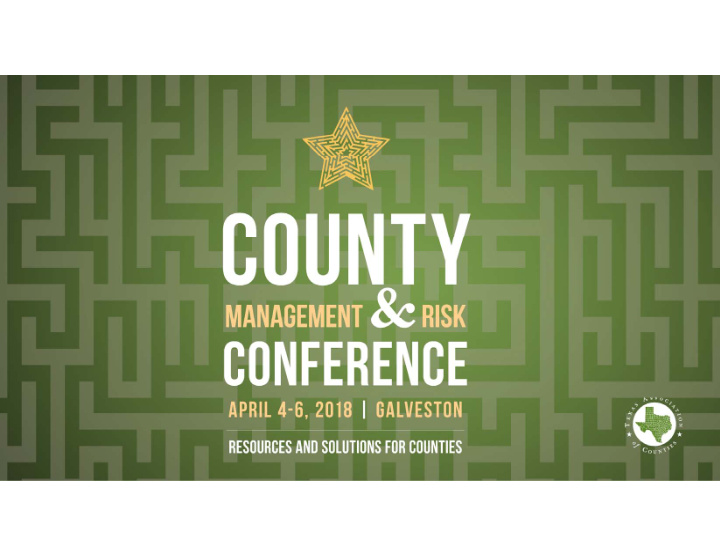



What (or Who) is Driving Your Auto Claims?
Disclaimer The information contained in this presentation is for educational purposes only. Any content presented is intended only as a recommendation and as a best practice in risk management. Each member must evaluate their own risks, hazards and exposures.
Session Objectives • Understand factors that have contributed to the rise of auto liability claims • Use defensive driving techniques to prevent accidents and injuries on the road • Identify common driving hazards • Understand how your claims data should be your starting point
Where Do I Start?
Self ‐ Assessment What kind of driver are you?
Your Driving Profile Type of Driver and Driving Characteristics based on How Do You Drive? 13 ‐ 15 16 – 19 20 – 23 Never True Answers Never True Answers Never True Answers Average Safe Driver Defensive Driver Licensed Informed In control • • • Insured Skilled Communicative • • • Controlled by Trained in defensive Cooperative • • • consequences driving Cautious • Respects the law Drives to save time Conscientious • • • Avoids confrontation Drives to save money Considerate • • • Follows the rules Drives to save lives Committed • • • Role Model •
Embrace Life
Risks in LE Vehicle Operation • Excessive speed….. Risk vs Return Response is it that important can you apprehend another way danger to deputy and public greater Outside Factors other drivers deer road conditions
Crossing Intersection at 90 MPH
Risks in LE Vehicle Operation • Distracted operation …. Sensory Overload cell phones mobile data terminals cameras, computers, radars Exhaustion outside employment double shifts/shift length
LE Distracted Driving
Seat Belts • Saved over 100,000 lives • Prevent crashing into steering wheel, dash, or windshield • Keep you inside vehicle • Protect body organs • Improve chances of remaining conscious
Driving Hazards • Aggressive driving • Fatigue • Distracted driving • Reckless driving • Failure to keep vehicles in good operating condition
Incidentally or Not?!
Texting Clip
7 Most Common Driving Mistakes 1. Failure to yield ROW 2. Failure to control speed 3. Failure to maintain lane 4. Collision while responding
7 Most Common Driving Mistakes 5. Backed without safety 6. Struck by vehicle 7. Rear ended
A Look At The Numbers
Driving Hazards: Dangerous Conditions • Wildlife – deer, feral hogs • Animal livestock – cows, goats, sheep, etc. • Rural railroad crossings • Road work
TAC Risk Management Pool NSC Certified Instructor This is a six (6) hour defensive driving course • Provided at no cost to Pool participants • Your personal insurance carrier may provide a discount •
TAC Risk Management Pool Law Enforcement / Road & Bridge Driving Simulator * For more information, TAC RMP members should Contact Darren Jackson at (800) 456 ‐ 5974
It All Adds Up! TAC RMP – Workers’ Compensation Claims from MVAs $4,000,000.00 $3,500,000.00 $3,000,000.00 $2,500,000.00 $2,000,000.00 $1,500,000.00 $1,000,000.00 $500,000.00 $ ‐ 2013 2014 2015 2016 2017 R&B LE All Other
What You can DO Know your claims data Form a team with key players (R&B, SO, etc…) Buckle seatbelt Drive defensively Don’t talk on the phone or text while driving Enact a policy covering your employees Provide driver training Remember, you are not alone. TAC consultants are here to help!
Risk Control Consultants Isaac Garcia (512) 573-6596 Jack Coffey, (512) 924-4773 Larry Boccaccio (512) 924-4769 Joseph Szewczyk (512) 815-7869
Recommend
More recommend